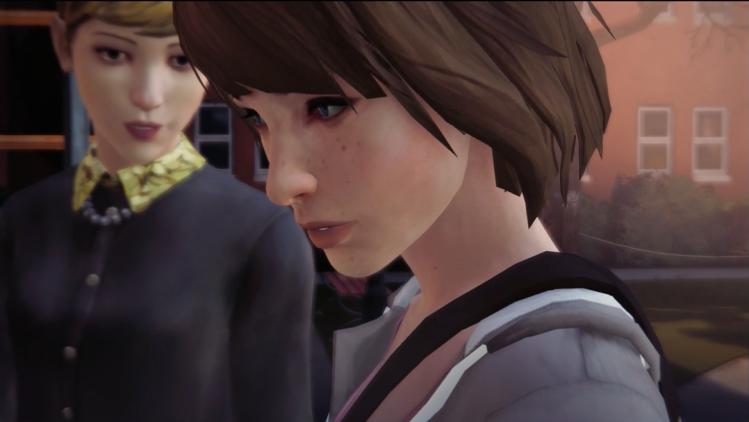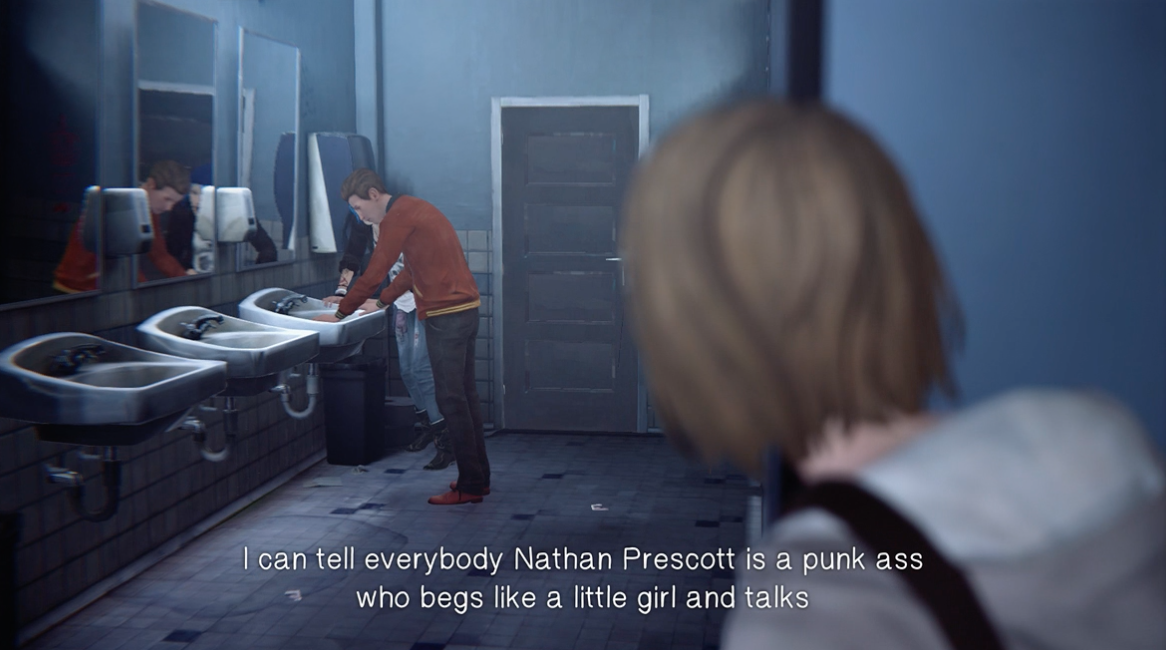Time reversal is nothing new to games. Recently, titles like Prince of Persia: The Sands of Time and breakout indie hit Braid used time rewinding to great effect in platforming. Racing games have also made use of time turn back. My barely decent racing times in the Forza Motorsport franchise serve as proof. Dontnod Entertainment’s latest adventure — one they call a mix between Gone Home and The Walking Dead — also lets you turn back time.
Dontnod’s previous effort, Remember Me, also centered on a time-rewinding mechanic. But everything else about Life is Strange is new for the Paris-based studio, and it brings a bunch of firsts for publisher Square Enix as well. The game plays out across six episodes, all of which will be spent drawing the player through a rich narrative, telling the story of a girl and her friend reunited in their hometown after five years apart. It’s a story-focused experience that goes all-in on character development, ditching action completely.
I’ve have the chance to play through the entire first chapter in a preview. The title’s unique approach to storytelling makes it one of the most captivating I’ve played in some time.
Life is Strange is all about choices, but the ones you’ll make seem inconsequential when compared to the storylines of a typical narrative-driven video game. As an example of how small the choices can be, one of the initial decisions protagonist Max Caulfield has to deal with taking a selfie with her instant camera while halfway through listening to a lecture in school. Is it time to be arty and original? Should she be interrupting the lecture to do so? What is everyone else in class going to think? These aren’t monumental, world-saving decisions. Not yet, at least.
And Max is quite the opposite of a typical game hero. She’s a shy, quiet photography student who has just returned to her childhood hometown in Oregon after some years to attend school. She’s not even confident in her knack for snapshots. She’s a loaner that tends to dwell on her insecurities for too long.
As unremarkable as this all sounds, Life is Strange manages to be highly engaging with the choices it presents and the possibilities those choices could lead to. Seemingly mundane, day-to-day decisions gradually reveal new facets of Max’s personality. Guiding her interactions with others sheds light on her upbringing and details on her surroundings. Before you know it — before you’ve really done anything of note — you find that you’re wholly invested in Max, drawn fully into her world.
While smart writing and strong performances go a long way toward this immersion, the real hook is tied to the aforementioned time-control ability. Max finds that she has the power to freely turn back time early on, allowing her to rectify wrong choices. Any action in the game can be redone, which means that Max can go back and restart a conversation to work toward a better outcome. Or, as in the first case in episode one, save a life.
Dontnod did an impressive job of gradually revealing the depth of this time-rewinding power through character development and storytelling. Max’s first use of the ability has her rewinding back a dangerous moment to save a friend, allowing her to make a last-minute change to her environment to distract an attacker. But she finds later on that her actions in that moment drew unwanted attention, which could cause problems for her and her friend further down the line. Should she go back and do it all over? Or maybe just some damage control through a white lie? Or does she press on, hoping that the path she’s on will be the best one?
Which brings us to the most interesting aspect of Life is Strange: You won’t know if you made the right choice until the end. Creative director Jean-Maxime Moris tells GamesBeat in an interview that a right or wrong choice doesn’t really exist, at least not in the short term.
“There is no perfect combination. There’s no white. There’s no black. It’s always positive and negative,” explains Moris. “We want you to feel like your choices matter. We want you to wonder what would have happened if you had done something else. That’s the way life is. You don’t get to rewind.”
While these choices seem small, you can still feel their weight. Even without seeing it, you sort of know that your guidance is going to have an impact on how the rest of the narrative plays out. Choices and their results are woven into a tapestry of developments that make your own story. But it’s not a choose-your-own-adventure situation. Moris says that all players are headed toward the same goal. It’s just the path that is different.
“We are doing something that is following the general philosophy of Telltale Games,” says Moris. “So the general story is going to move in the same direction for everyone, regardless. But it’s your choices that are going to determine how your story gets told and how that story feels different from other people’s.”
“What we’re trying to add to Telltale’s formula is really make as many scenes as possible feel very different depending on what led into it. What I mean by that is that the same key events are going to be happening on different reasons based on your choices.”
Laying out a narrative with so many choices across five separate episodes is no small task. Moris explains that his team started from the top down, beginning with the story, working in the choices and the settings as they continue. Even with the first episode releasing this week, they’re still working on how Life is Strange will play out in the end. Through online connected tracking of choices, even player input will be considered for the events of later episodes.
“All the major beats of the story are locked down. The story is written in stone. But in terms of production and all of the secondary choices you make, the further out you get in terms of release…for example, episode five is still very much open to being tuned depending on what gets done by players in episode one.”
He continues, “We have to work on all episodes at the same time. So, today episode one is done. Episode two is probably 65 to 70 percent complete. Episode five is 10 to 15. All of the others are in between. Every day some work gets done on two, but also three, four, and five.”


